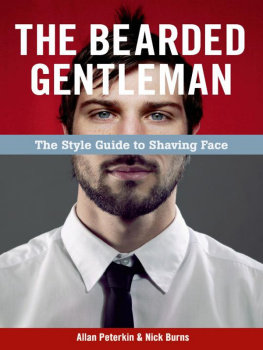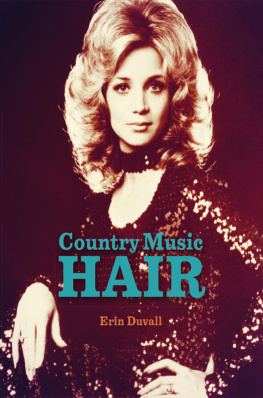ONE THOUSAND MUSTACHES
ONE THOUSAND MUSTACHES
A CULTURAL HISTORY OF THE MO

ALLAN PETERKIN
Arsenal Pulp Press | Vancouver
ONE THOUSAND MUSTACHES
Copyright 2012 by Allan Peterkin
All rights reserved. No part of this book may be reproduced in any part by any meansgraphic, electronic, or mechanicalwithout the prior written permission of the publisher, except by a reviewer, who may use brief excerpts in a review, or in the case of photocopying in Canada, a license from Access Copyright.
ARSENAL PULP PRESS
Suite 101, 211 East Georgia St.
Vancouver, BC V6A 1Z6
Canada
arsenalpulp.com
The publisher gratefully acknowledges the support of the Canada Council for the Arts and the British Columbia Arts Council for its publishing program, and the Government of Canada (through the Canada Book Fund) and the Government of British Columbia (through the Book Publishing Tax Credit Program) for its publishing activities.
Efforts have been made to locate copyright holders of source material wherever possible. The publishers welcomes hearing from any copyright holders of material used in this book who have not been contacted.
Book design by Gerilee McBride
Mustache illustrations (pp. 126135) by Jaye Lyonns
Cardboard mustaches by Angela Caravan
Editing by Susan Safyan
Author photograph by Robert Thomas
Library and Archives Canada Cataloguing in Publication
Peterkin, Allan D.
One thousand mustaches : a cultural history of the mo / Allan Peterkin.
Includes bibliographical references and index.
Issued also in electronic format.
ISBN 978-1-55152-475-7
1. MustachesSocial aspectsHistory. 2. MustachesHistory.
I. Title.
GT2318.P48 2012 | 391.5 | C2012-904417-2 |
CONTENTS
When my first book on the subject of facial hair, One Thousand Beards, was published in 2001, I somewhat tentatively predicted the return of the mustache. In the years that followed, what we saw instead (at least initially) was further growth of the beard in cheeky variations, like the play-off beard, the strike beard, the lay-off beard, the break-up beard, and the mountain-man beard. The long-neglected mo, on the other hand, could be spotted on an occasional fashion runway, on the face of a feckless sitcom character, or on your Uncle Fitz, where it had been comfortably situated for years. The brave fellow who grew one spontaneously in his natural habitat had to cope with layer upon layer of historical projectionswas he a fop (i.e., hopelessly effete), a foreigner (a term favored by clean-shaven men of pallor), or a fiend (twirling the tips with evil on his mind)? He would also be reminded that barbarians wore them as they sacked Rome (which permanently set the standard for the ferocious military mustache thereafter); that tired old colonials wore them as the Empire collapsed; that Charlie Chaplin boasted one as the bumbling Tramp; and that members of the seminal 70s disco group Village People wore different variations as they encouraged young men to explore their local YMCA.
The mustache, then, an iconic symbol of adventure, virility, and fierce independence, had been tarnished or at least become complicated. To wear a stache was to face an endless stream of unwelcome questions and comments. But little by little, the status of the stache improved, thanks to pioneers and proponents like the Handlebar Club, the American Mustache Institute, the Glorius [sic] Mustache Challenge, the World Beard and Mustache Championships, and charitable initiatives like Movember (an Aussie-originated fundraiser for prostate cancer research that has spread worldwide like wild-fire in recent years). The ubiquitous beard-mania that reached new heights with the goatee in the mid-90s more than paved the way for the PoMo mo. Men realized that their faces were blank canvases and that they were suddenly free to express themselves at home and at work in ways their fathers and grandfathers (who were often corporate nine-to-five slaves) could not. Facial hair was meant to be playful, masculine, sexy, and ironic. You did it with a wink of an eye (and a twirl of your waxed tips) and could actually revel in the ways your furry face got misread, ridiculed, or fetishized by those around you.

Keith J. Haubrich's cat whiskers (self-portrait) won 1st place in the Freestyle Mustache category at the World Beard & Moustache Championships 2007 in Brighton, UK.
The mustache has thus become a spectacular, embodied performance of masculinity in all its post-millennial complexity and ambiguity. To wear a stache is to wear your personality on your sleeve (or in this case, your face).
So, stache-wearers, its time to take back the mo from evil dictators and porn stars and to embrace this elegant choice of facial hair full on. Its time to remind others that its not all about the beard. More mos for everyone!

Moustache is the British spelling, while mustache is American. Canadians (ever-obliging) use both spellings.
Over time, the rationale for stache-growing has morphed as the popularity of the mustache has waxed and waned. These are the most common reasons men have tended to sport lip fur and still do:
because a mustache is masculine and virile (and studies prove it!)
its less upkeep than a full beard
its a form of playful rebellion or provocation (against parents, the workplace, and general clean-shavenness)
because your favorite historical figures have worn one (Gandhi, Martin Luther King Jr.)
its a professional norm (e.g., military, police, firefighter, lion-tamer)
its a symbol of national pride (Poles, Spaniards)
its an emblem of war
your favorite movie or sports star wears one
your president / prime minister / king had one (William Taft / Robert Borden / Charlemagne)

Mahatma Gandhi, in the 1940s.
it acts as an air filter and keeps your upper lip warm
its always a conversation starter
it keeps others guessing about your sexuality (gay, bi, swinger)
its the last frontier of facial hair (everything else has been done since goatees hit in the 90s)
it statistically increases your chance of getting married (and has done so for centuries, based on recent research)
its a form of adolescent pride (peach fuzz and the first wisps of facial hair)
its fun to wax, twirl, and play with it
it makes you part of a stache-brotherhood (like the American Mustache Institute)
its a personal trademark
its a family tradition (your dad had one, and his dad afore him)
because your partner is pro-mo
it helps to mark a transition (divorce, new job, wanting to look older or younger)
it balances your facial features (like a big nose)
it changes your public face (why did Alex Trebek of Jeopardy! shave his?)
its great for charity (Movember, Mustaches for Kids)
it shows support for your teams during playoffs
its a useful disguise

Next page














